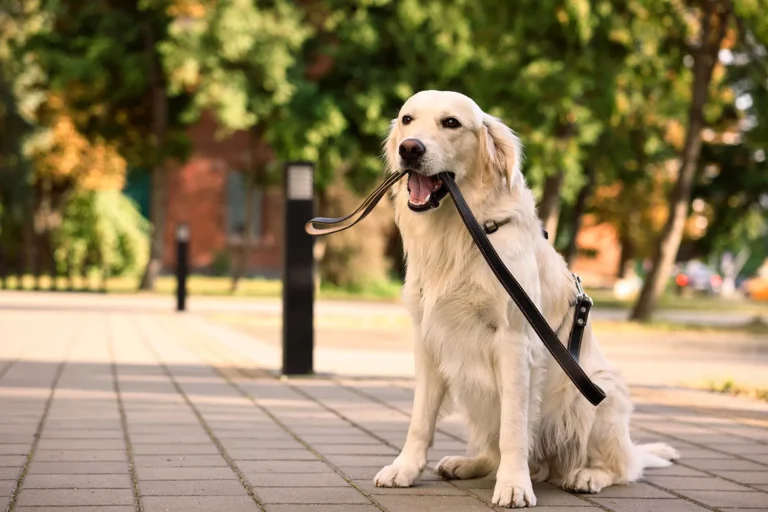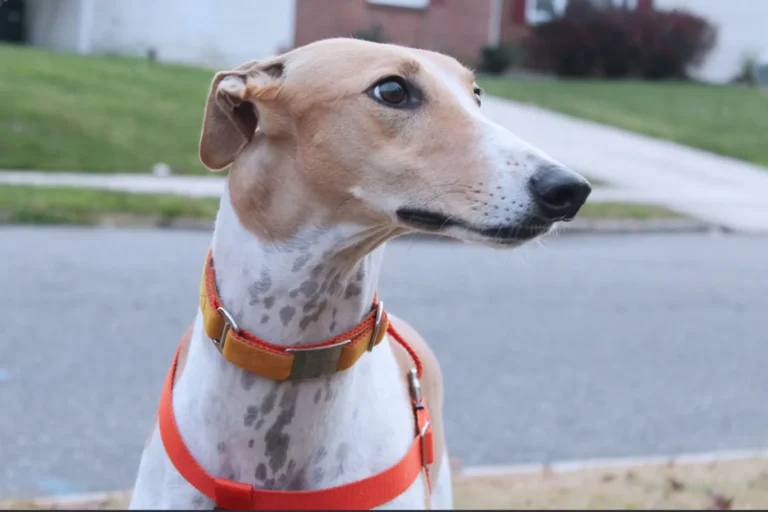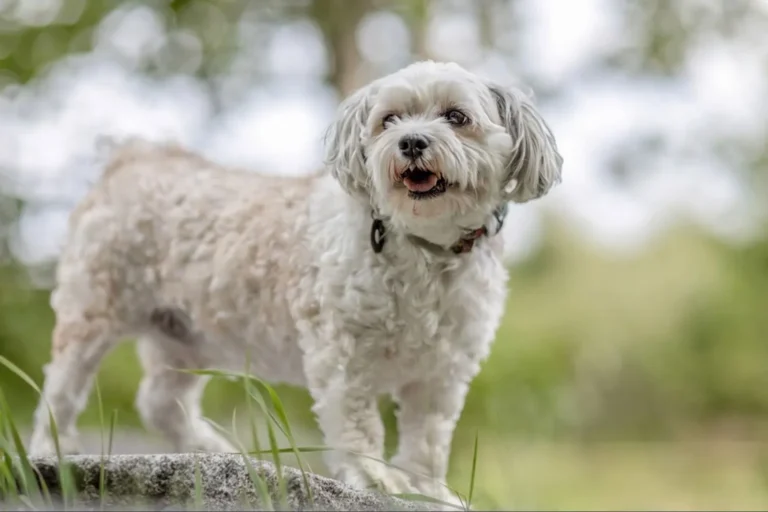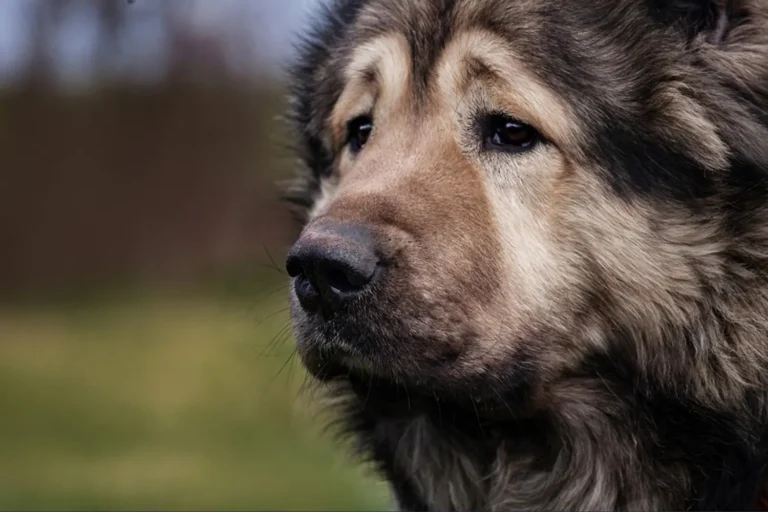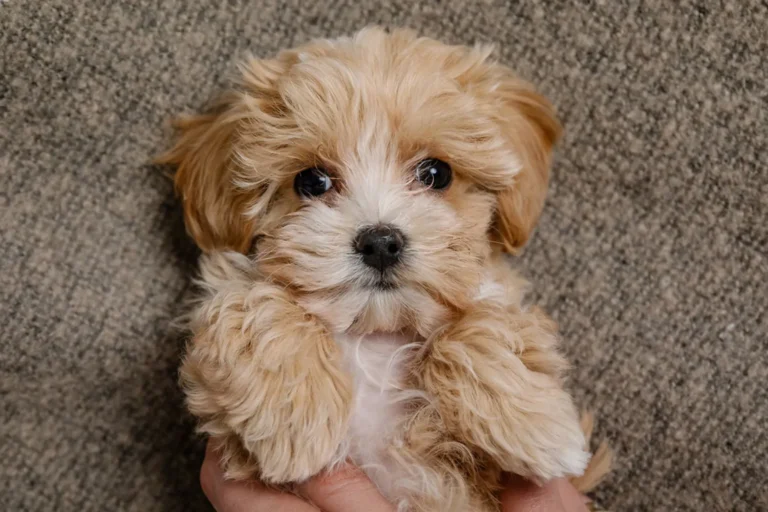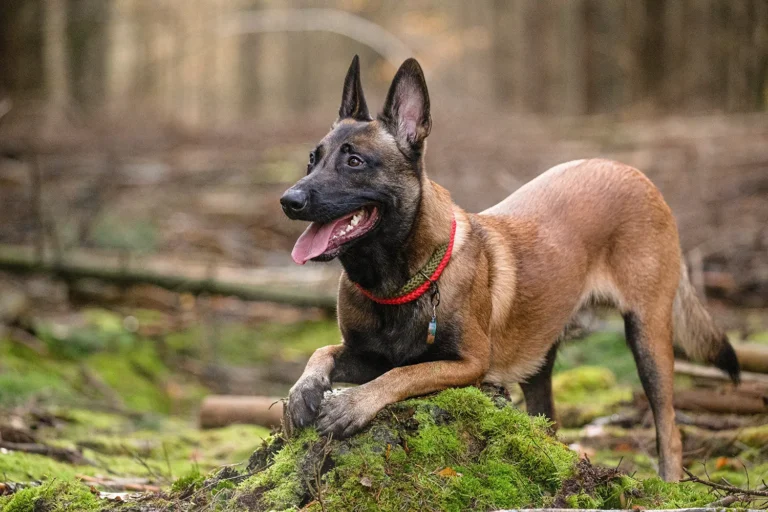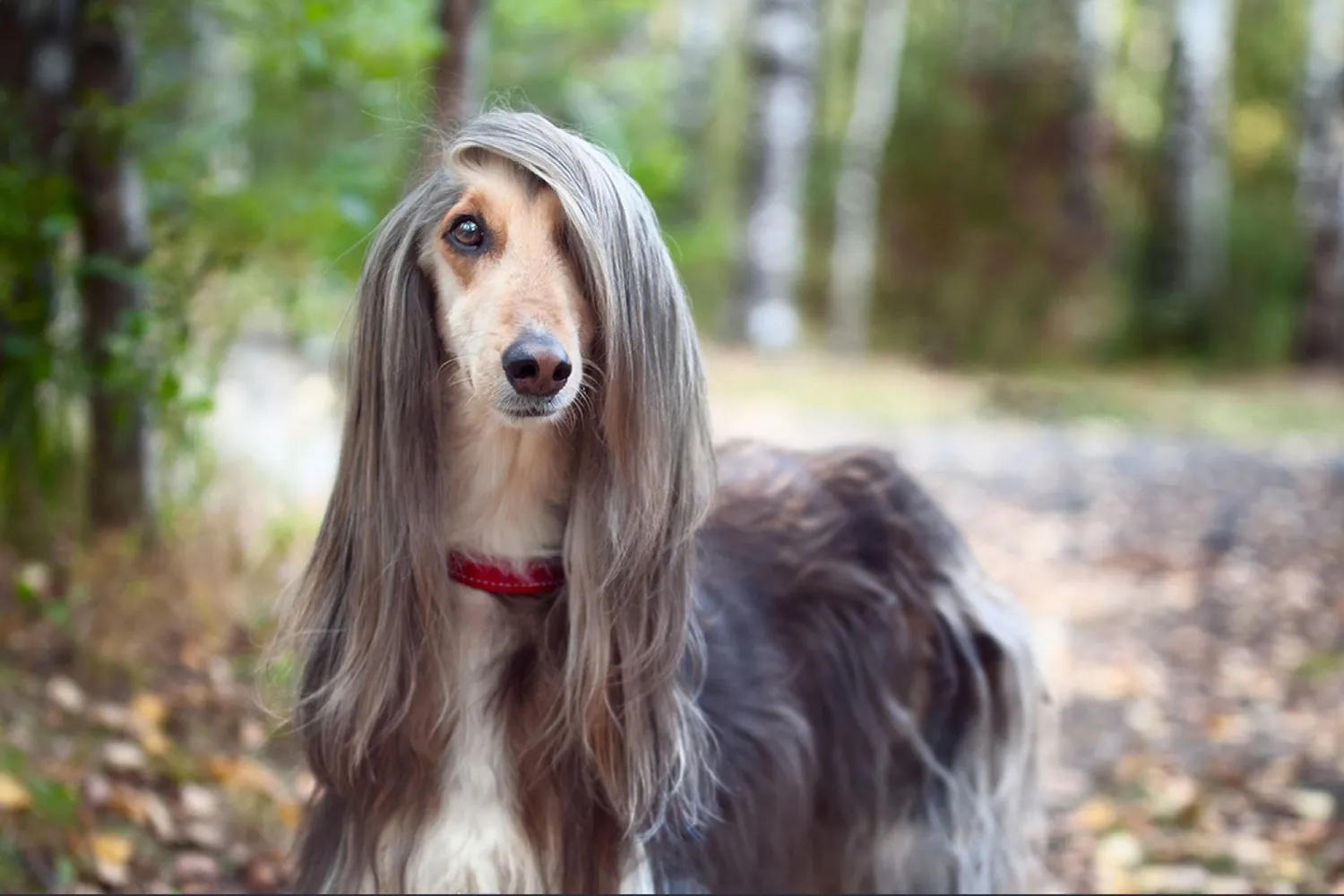
The Afghan Hound really is charm personified, all flowing silk and that striking, exotic face that turns heads from across the park. One of the world’s oldest and most recognizable breeds, they glide with a quiet elegance and carry themselves with a dignified, almost regal air. I remember meeting one named Zara who moved like a runway model and then, out of nowhere, burst into a joyful sprint that made everyone laugh.
If you’re smitten, be ready for coat care regular brushing keeps that satin look and prevents tangles. Training works best when it’s gentle and patient; they’re independent thinkers, not drill sergeants. And while they love a comfy couch, they still need room for those sighthound zooms, plus a secure leash or fenced yard for safety. Treat them with respect and a touch of humor, and they’ll return the favor with timeless style and quiet affection.
History and Origin of the Afghan Hound
If you’ve ever watched an Afghan Hound float past like living silk, it’s easy to believe the stories about their ancient past. Some experts even say they might be the oldest pure dog breed. There’s a lovely old myth that a pair of Afghans boarded Noah’s Ark as the finest representatives of dogkind I can just picture those elegant profiles looking out over the flood, full of secrets and dignity.
The truth is, this breed was shaped long before anyone wrote things down, in some of the most isolated, rugged parts of the world regions we now call Afghanistan, Pakistan, and India. That’s part of why their exact birthplace and birthday are lost to time. What people do agree on is how they lived: as fleet footed, hardy hunting companions, racing over rocky slopes and through mountain passes. For centuries they weren’t just working dogs; they were symbols of status and pride, kept by aristocrats, tribal chieftains, and royalty in the mountain kingdoms of Asia. I once saw a faded black and white photo at a small rural museum an Afghan standing beside a rider on a narrow mountain trail. Even in the grainy image, you could see that signature ringed tail and that unshakeable poise.
The Afghan’s journey into Western history didn’t really begin until the late 19th century. English officers returning from far flung corners of the British Empire brought them home, and Europe was instantly smitten. By the early 20th century, the breed was a favorite among the British gentry glamorous at dog shows and unforgettable on country estates. A neighbor of mine once pulled out an old family album and pointed to a 1920s snapshot of her great grandmother in tweed with a tall Afghan at her side; she swore that dog stole more than a few picnic sandwiches and plenty of hearts. Across the Atlantic, the American Kennel Club registered the Afghan Hound in 1927, and by 1935, the first litter was whelped in Australia, spreading their legend even farther.
Knowing their story helps you understand them today. They’re sighthounds through and through built to spot and chase, with the stamina to cover rough ground. A breeder I spoke with in California told me her dogs still “read” the terrain with their eyes first, picking a path at full speed that would make a goat jealous. If you share your life with an Afghan, give them safe opportunities to run, like a fenced field or a lure coursing day. Their silky coat isn’t just for show either it once shielded them from harsh winds so regular grooming is part of honoring their heritage. I’ve turned brushing into a quiet ritual with a friend’s Afghan, and by the end, that aloof, regal head is usually leaning into my shoulder. These dogs carry centuries of history in every stride, and when you live with one, you feel like you’re keeping a little piece of that legend alive.
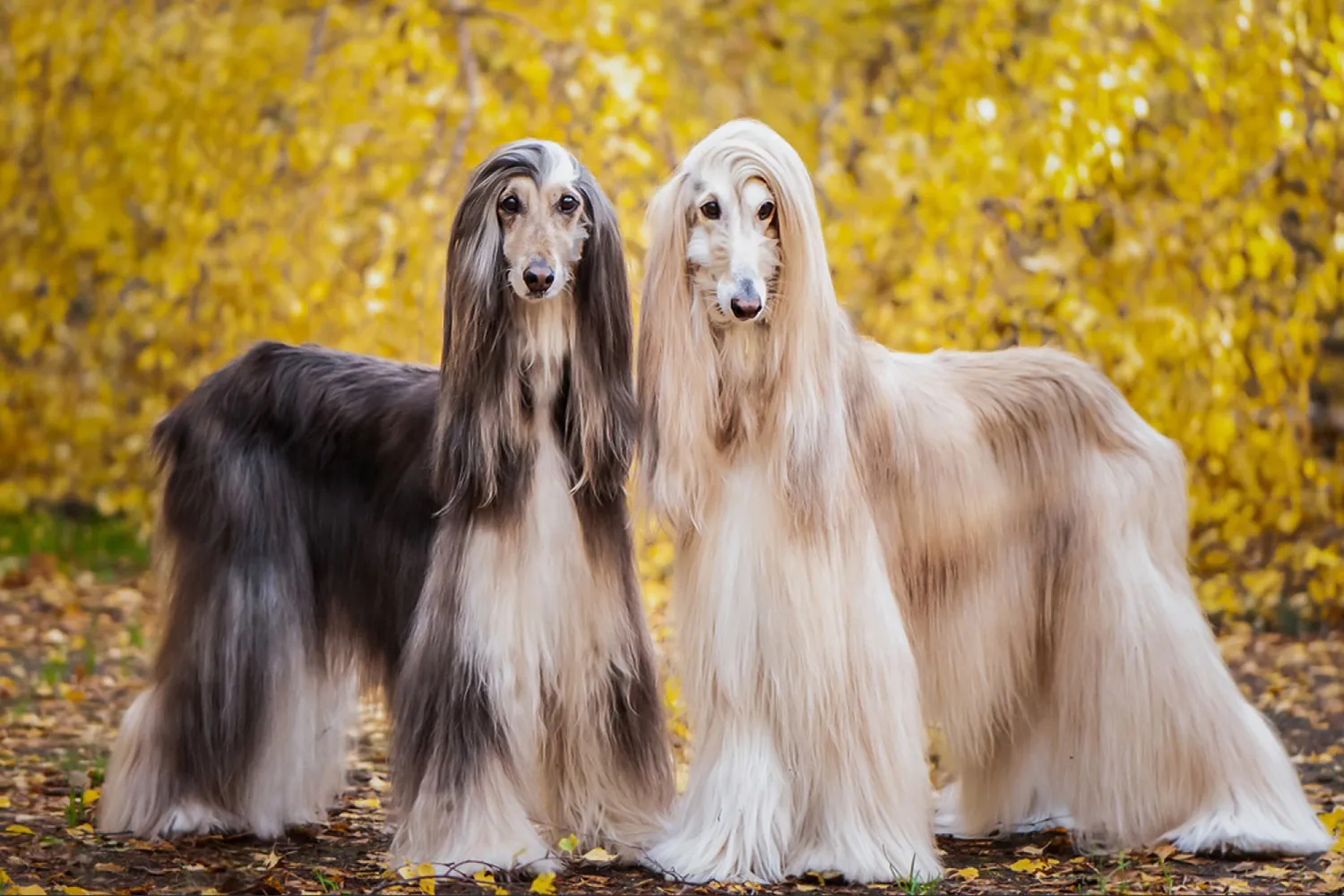
What Is the Afghan Hound?
Think of the Afghan Hound as the runway model of the dog world: tall, slim, and impossibly elegant, with a silky coat that seems to float when they move. They’re part of the hound group, and more specifically, they’re sighthounds dogs built for spotting and chasing moving things at lightning speed. While many breeds hunt with their noses, sighthounds rely on panoramic vision and explosive bursts of speed to find and pursue prey. It’s breathtaking to watch, and it explains a lot about their personality and needs.
That famous “modelesque” stance isn’t just for photos. Afghan Hounds carry themselves with a cool, dignified grace that has made them a favorite in the show ring. Underneath the glamour, though, they can be surprisingly playful and a little bit goofy at home like a sophisticated friend who secretly loves zoomies. I once watched a friend’s Afghan pivot from regal statue to couch clown in two seconds flat, and it was pure joy.
One big thing to know: Afghan Hounds are world-class escape artists. Their speed plus that keen eyesight means if they spot a squirrel three yards over, they’re gone before you finish saying “Wait!” A high, secure fence is essential think sturdy and tall, with latches that can’t be nudged open. I used to dog sit an Afghan and learned to do a quick “perimeter check” before every backyard romp. Off leash in unfenced areas is risky; a long line or enclosed field is your best friend. Short, fast sprints in a safe space, flirt pole games, or even lure coursing are great ways to let them stretch those legs.
If you’re smitten with the glamorous look, just know that beautiful coat takes some upkeep. Regular brushing keeps tangles at bay, and a tidy trim can make everyday life easier if you’re not heading for the show ring. With the right setup and a bit of know how, an Afghan Hound is a captivating companion equal parts elegance, speed, and charming mischief.
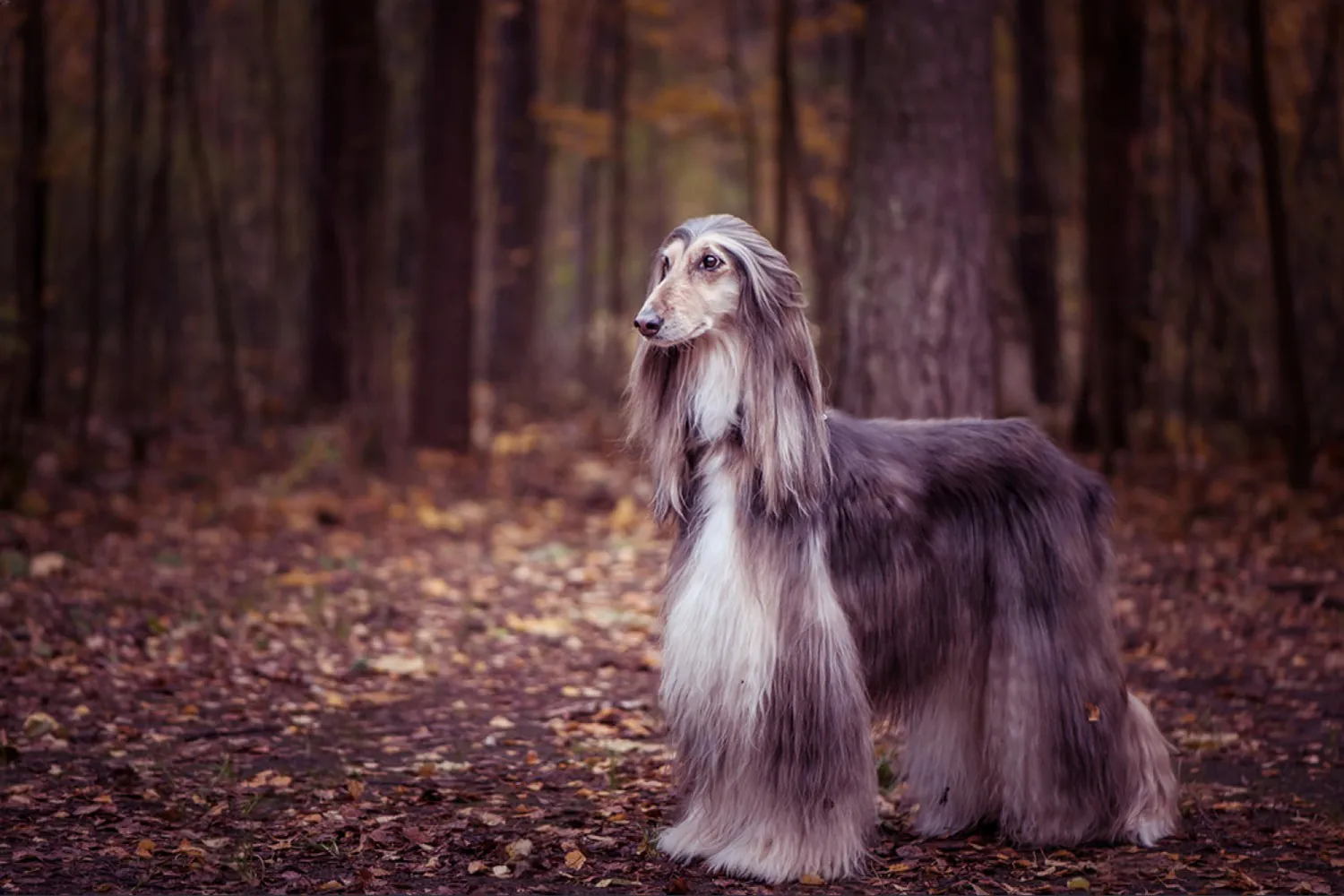
Who Is an Afghan Hound Best For?
Afghan Hounds are stunning, independent souls, and in my experience they’re generally a better fit for adult households. They’re large, sensitive, and a bit reserved, especially with boisterous energy around them. Many don’t enjoy being followed, hugged, or pestered, and those quick, zigzag kid movements can make an Afghan tense in a heartbeat. I once watched my friend’s Afghan, Laila, gracefully step out of the path of an excited toddler like a ballerina dodging a stagehand no drama, just a clear “I need space” message.
That said, with time and thoughtful socialization, some Afghans can learn to tolerate sometimes even quietly enjoy life with children who know how to behave around dogs. If you’re committed, start early and keep it positive: pair calm kid moments with treats, teach the dog to settle on a mat while children move slowly nearby, and build up gradually. Just as important, teach the kids from day one how to be respectful: let the dog come to them, pet gently on the shoulder or chest, no chasing or grabbing, and absolutely no bothering the dog when it’s eating or resting. I like to set up a “safe zone” (a bed in a quiet room or behind a baby gate) where the dog can retreat and everyone agrees it’s off-limits.
Overall, Afghans tend to thrive with adults or families with older, dog savvy teens who can follow house rules. They appreciate a peaceful routine, gentle handling, and people who understand their catlike dignity. If that sounds like your household and you’re willing to put in consistent socialization the Afghan Hound can be a wonderfully elegant, affectionate companion who chooses you on their own terms. And when they decide you’re their person? That soft lean against your leg feels like a little victory every time.
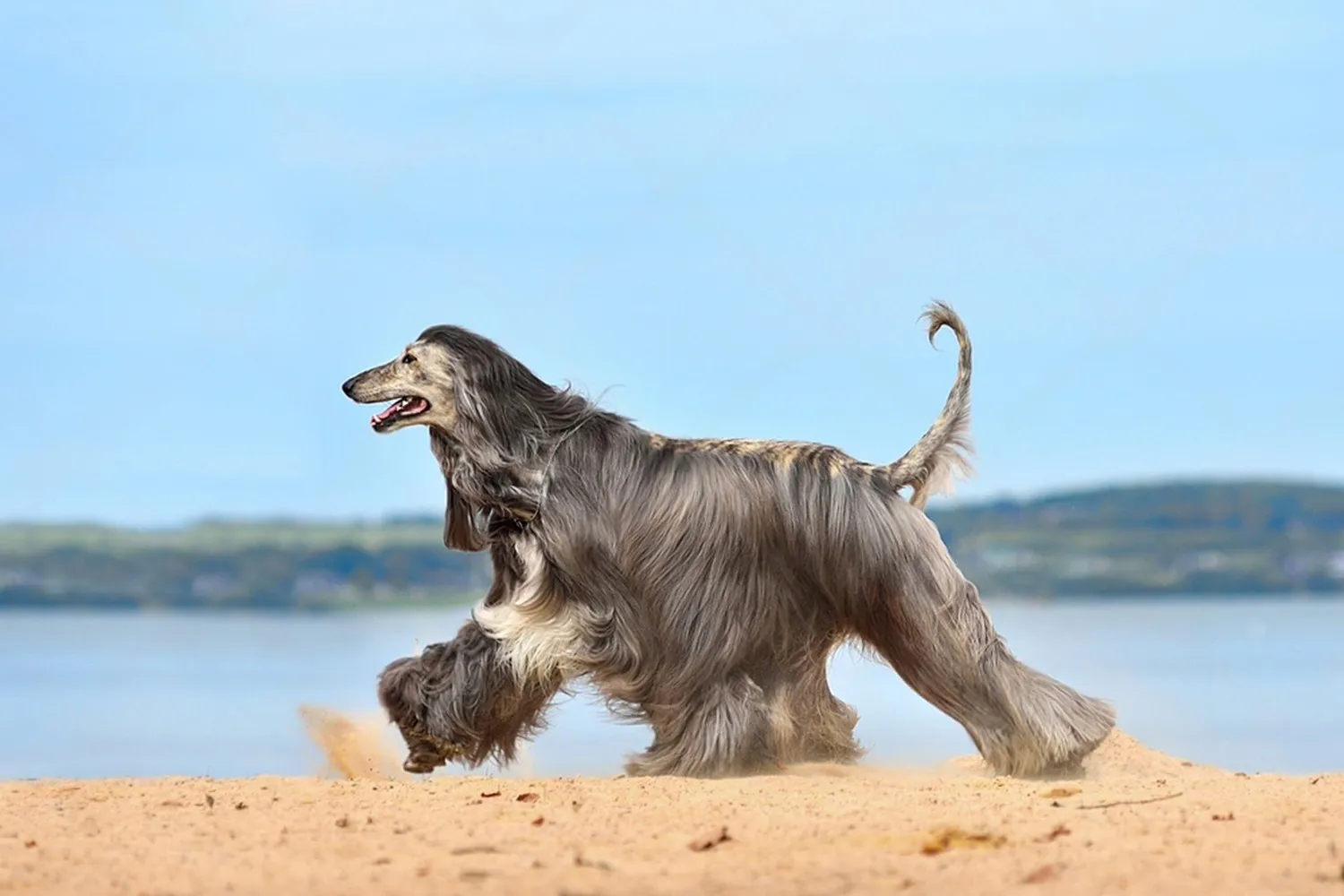
Afghan Hound Grooming & Shedding
That glorious, floor length coat is the Afghan Hound’s signature and when it’s cared for, it truly takes your breath away. The hair is fine and silky, very much like human hair, with long feathering over the ears, legs, and feet, and a sleeker “saddle” along the back. I once met an Afghan named Laila at a training class, and every time she trotted by, people actually paused mid conversation to admire her shine.
Beautiful comes with work, though. Plan on a few hours of brushing each week to prevent mats, tangles, and to remove leaves and little burrs from walks. I like to use a pin brush with rounded tips and a long tooth metal comb, and I never brush a completely dry coat just a light mist of conditioner or detangling spray before you start. Work in sections from the ends up (line brushing is your friend), and pay extra attention behind the ears, under the armpits, and around the tail where sneaky knots love to form. A breeder I spoke with in California taught me to check the feathering on the feet daily; it takes two minutes and saves you from a half hour detangling session later.
Bathing is essential for that sleek, flowing look. Regular baths with a quality canine shampoo and conditioner keep the coat clean and smooth. Rinse thoroughly, then blow dry on a cool setting while brushing to keep tangles from forming as it dries. I also pop a snood over the ears at mealtimes learned that trick the hard way after fishing gravy out of silky ear fringe.
Shedding wise, Afghans tend to lose hair lightly year round, and most of it ends up in your brush and the tub drain rather than all over your couch. Expect more grooming during the adolescent “puppy coat” change, when mats can appear overnight. If life gets busy, a shorter pet trim can make upkeep easier without losing that elegant Afghan vibe. Whatever routine you choose, consistency is the secret to that breathtaking, tangle free finish.
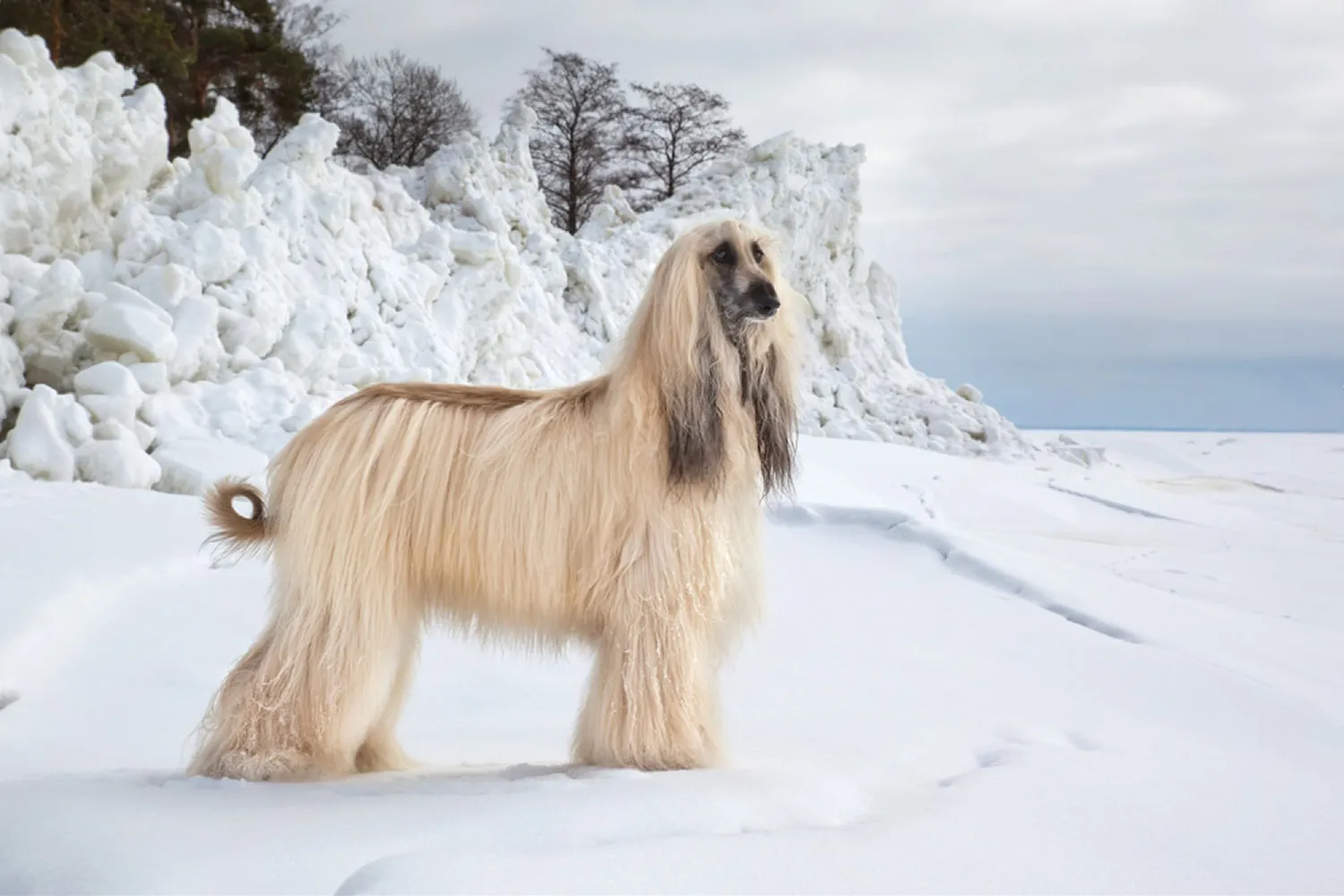
Do Afghan Hounds bark a lot?
Afghan Hounds tend to be the strong, silent type. They’re not natural watchdogs, and most would rather observe the world with that serene, regal gaze than announce every passerby. You might hear a dignified “woof” or two if the doorbell rings or someone unfamiliar steps inside, and then they’re back to the sofa like nothing happened. My friend’s Afghan, Laila, gives exactly two polite barks at deliveries never three and then sashays off to reclaim her favorite cushion.
Because they’re generally calm and aloof, excessive barking is pretty rare with this breed. That said, any dog can get noisy if they’re bored or under exercised. What helps with Afghans is a good routine: brisk daily walks, a safe sprint or two if you’ve got access to a secure area, and some brain work like puzzle feeders or scent games. I’ve had success rewarding quiet moments at the window and teaching a gentle “quiet” cue catch them being calm and pay them for it. Also, try not to accidentally reinforce barking by rushing to the door in a flurry every time they do; keep your energy low and steady.
If you’re hoping for a canine alarm system, an Afghan probably isn’t your top pick. But if you love a peaceful home with the occasional amused “woo woo” during playtime or when dinner’s a minute late, they’re wonderfully understated roommates.
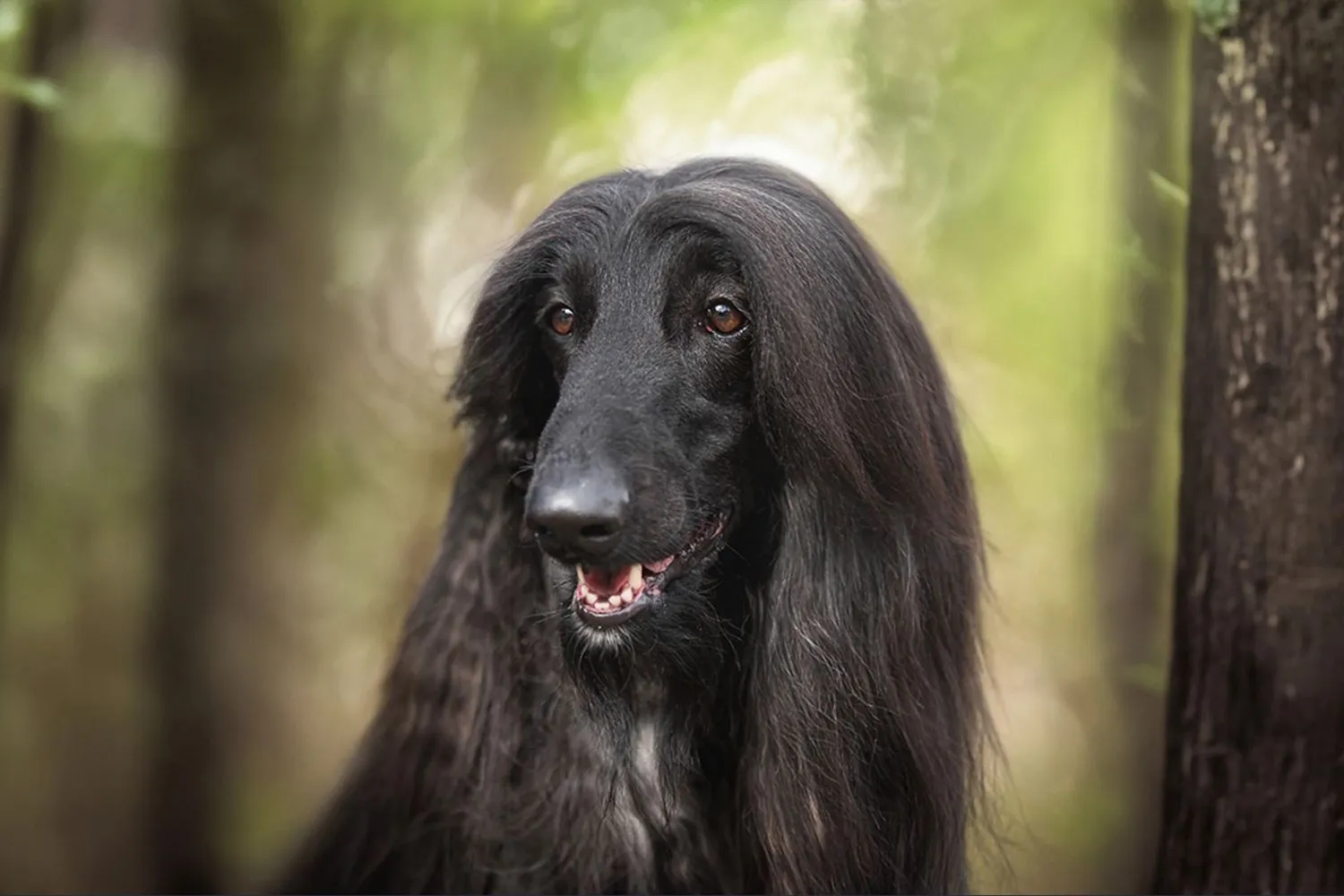
Afghan Hound Average Height and Weight
If you’re sizing up an Afghan Hound, here’s what to expect once they’re fully grown. Males usually stand about 68-71 cm at the withers (that’s the top of the shoulder) and weigh around 27-34 kg. Females are a little more petite, typically reaching 63-65 cm and weighing around 22 kg. For folks who think in pounds and inches, that’s roughly 26.5-28 inches tall for males and 24.5-25.5 inches for females, with weights of about 60-75 lbs for males and close to 48-49 lbs for females.
Don’t be fooled by that glamorous coat, though Afghans often look heavier than the scale says. I remember taking a friend’s Afghan to the vet, convinced she had to be at least 35 kg. The fluffy drama! She clocked in just under 23 kg and pranced out like a supermodel. When you measure height at home, use a tape measure and a flat edge (a book works) at the withers, and have your dog stand square on a non slip surface. I like to make it a tiny training game with a few treats so they hold still long enough for a good reading.
The Afghan Hound Club of New South Wales notes that anything outside the standard height is considered a “fault” in the show ring. For the average pet owner, this really shouldn’t matter. What matters most is overall condition and health. With sighthounds, you should be able to feel the ribs under a light layer of flesh and see a defined waist and tuck up lean is normal for this breed. Aim for regular weigh ins (a quick pop onto the vet’s scale every few months does the trick), keep an eye on body condition rather than chasing an exact number, and adjust food and exercise gently as needed. And remember, a well groomed Afghan looks like a floating cloud, but the body underneath is athletic, streamlined, and built for grace and speed.
https://en.wikipedia.org/wiki/Afghan_Hound
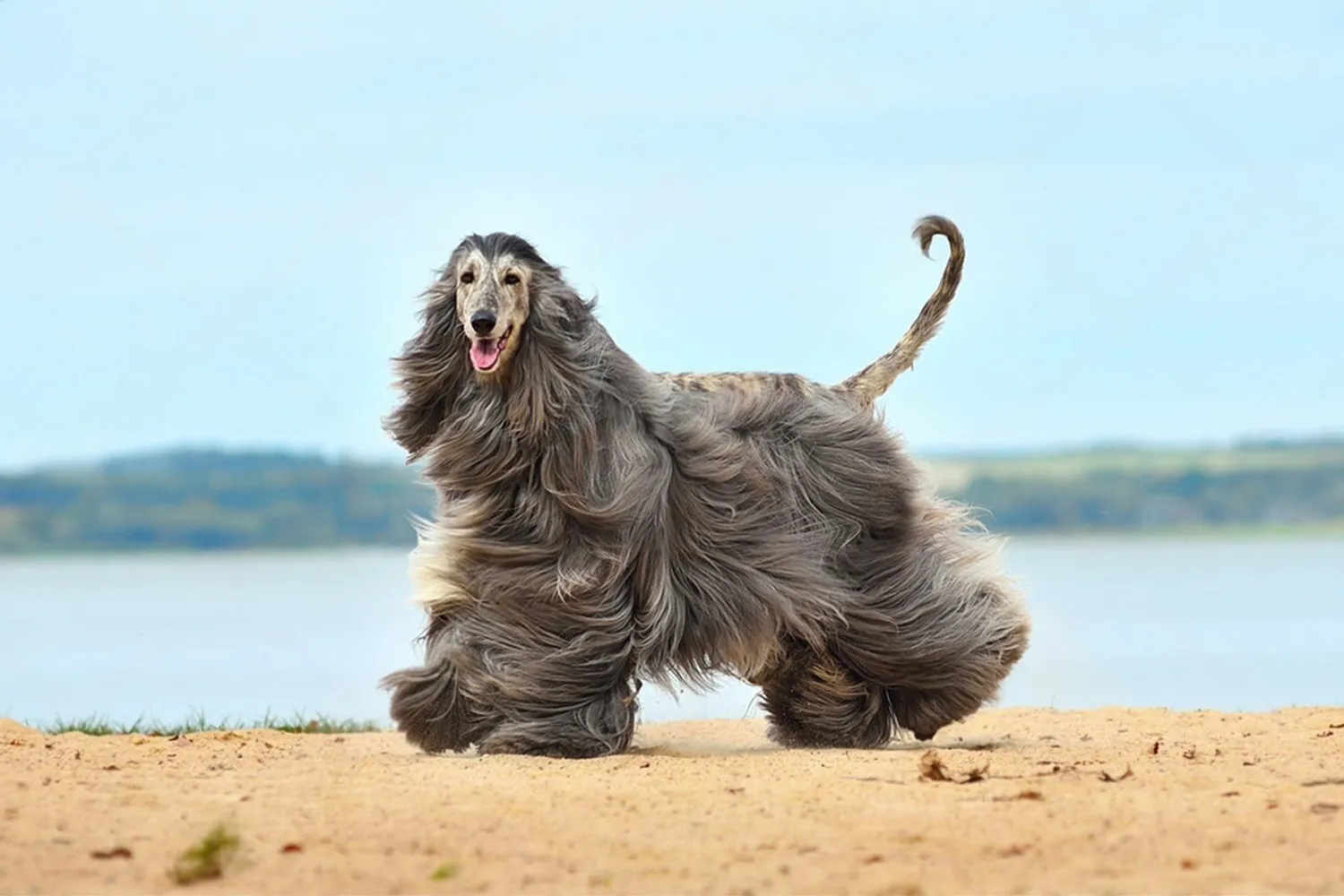
Are Afghan Hounds Easy to Train?
Beautiful, brainy, and gloriously independent, Afghan Hounds tend to approach training with a “what’s in it for me?” attitude. They absolutely can learn, but they don’t live to please the way some breeds do. Unless you’re specifically aiming for shows or dog sports, it’s perfectly reasonable to focus on solid household manners: coming when called inside, waiting politely at doors, settling on a mat, and walking nicely on leash. Think of it as teaching a very elegant roommate how to share a home, not drilling a soldier.
Their hunting drive is the real wildcard. Afghans are sighthounds, and when something fast and fluffy darts across the horizon, their instincts can drown out even well practiced cues. I learned this the dramatic way when my friend’s Afghan, Ziva, locked eyes on a rabbit mid walk. One moment she was heeling like a pro, the next she was a kite on a string. A long line and a secure harness saved the day, and ever since, I’ve treated recall outdoors like a carefully managed privilege: practice in low distraction areas, use a long line or fenced fields, and never assume off leash reliability around potential prey.
Because they’re sensitive souls, harsh corrections backfire. Raise your voice and many Afghans simply shut down or drift away, emotionally and literally. Gentle but firm works best: short, upbeat sessions, calm consistency, and very high value rewards. I like starting after a brisk walk when the edge is off, then keeping lessons playful and brief. Sometimes you’ll ask for a sit and get a polite stare that clearly says, “I’ll consider it.” Give them a beat, mark the effort when it comes, and celebrate small wins. A martingale collar can help prevent slipping out, and engaging outlets like lure coursing or structured sprint games give that prey drive a safe place to fly.
If you dream of competitive titles, it’s not impossible you’ll just need creativity, patience, and a sense of humor. For most homes, though, kindness, clear rules, and realistic expectations go a long way. Choose your battles, protect their safety, and let their independent spirit be part of the charm.
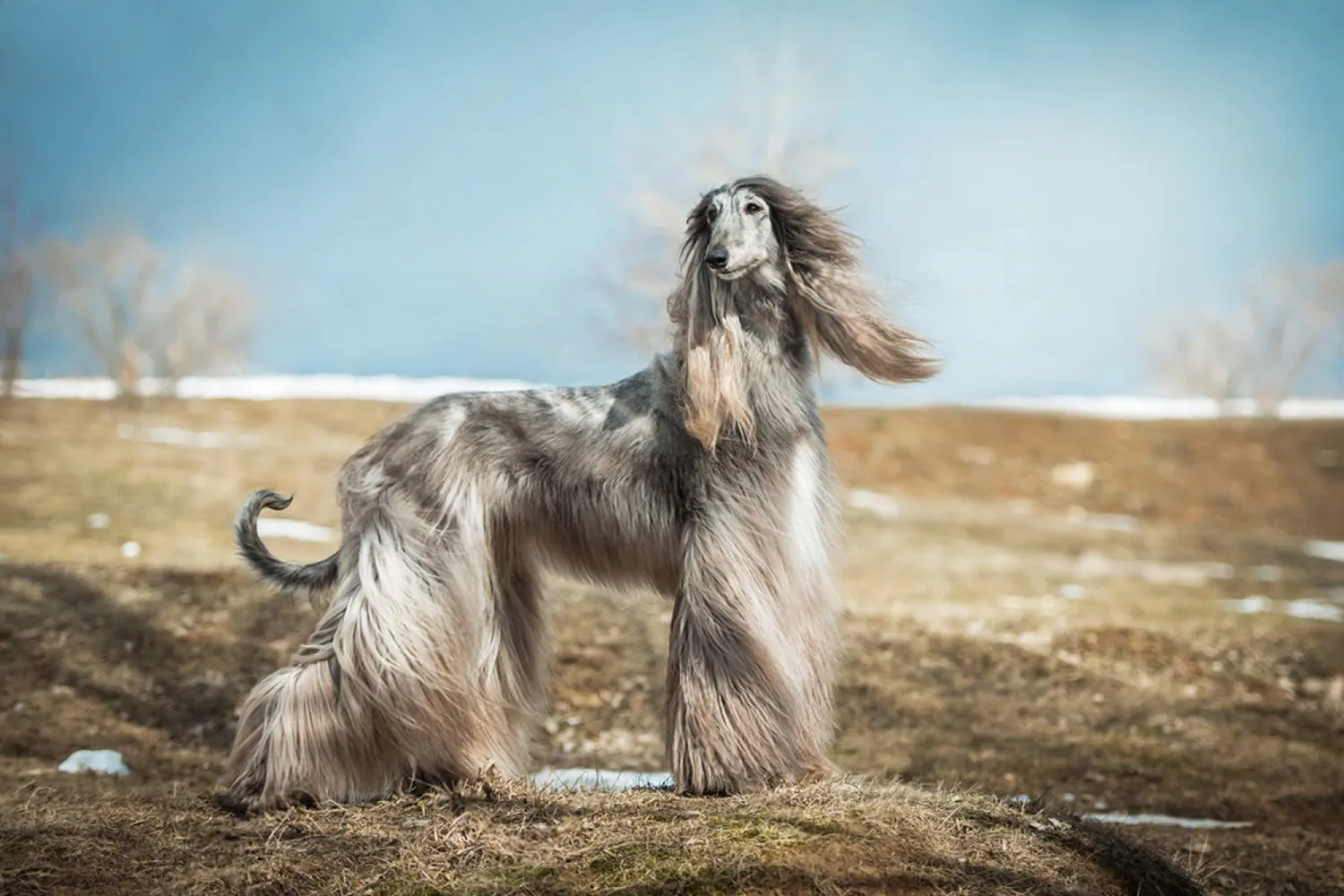
How Do Afghan Hounds Behave? A Look at Their Temperament and Personality
If you’re expecting a social butterfly, the Afghan Hound will surprise you with its cool, cat like poise. They tend to be one person dogs, saving their affection for the inner circle. When guests arrive, don’t be offended if you get a regal glance and little else. I once had a neighbor’s Afghan, Nura, glide past a room full of outstretched hands and settle on her favorite armchair like a queen. Ten minutes later, when the room was calm, she came over and leaned against my leg as if to say, “Now we may be acquainted.”
That self confidence pairs with a very independent streak and a will of their own. Training an Afghan isn’t about drilling commands; it’s about convincing a free thinker that your idea is worth their time. Short, upbeat sessions work wonders lots of praise, tasty rewards, and zero heavy handedness. I joke that an Afghan’s favorite command is “Why?” Recall, in particular, should be practiced on a long line and in safe areas they hear you, they’re just deciding. Give them choices and keep things interesting, and you’ll see a quiet eagerness instead of resistance.
And then there’s the delightful curveball: their ditzy moments. For such an elegant breed, they can be gloriously silly. One time I watched an Afghan toss a squeaky toy, scare himself with the squeak, and then prance around like he’d discovered a new species. Expect zoomies, sudden play bows, and the occasional “whoops” when all that silky hair gets in the way. With patience, early socialization, and a sense of humor, you’ll discover a companion who’s dignified with strangers, deeply devoted to their chosen person, and secretly a clown at home.
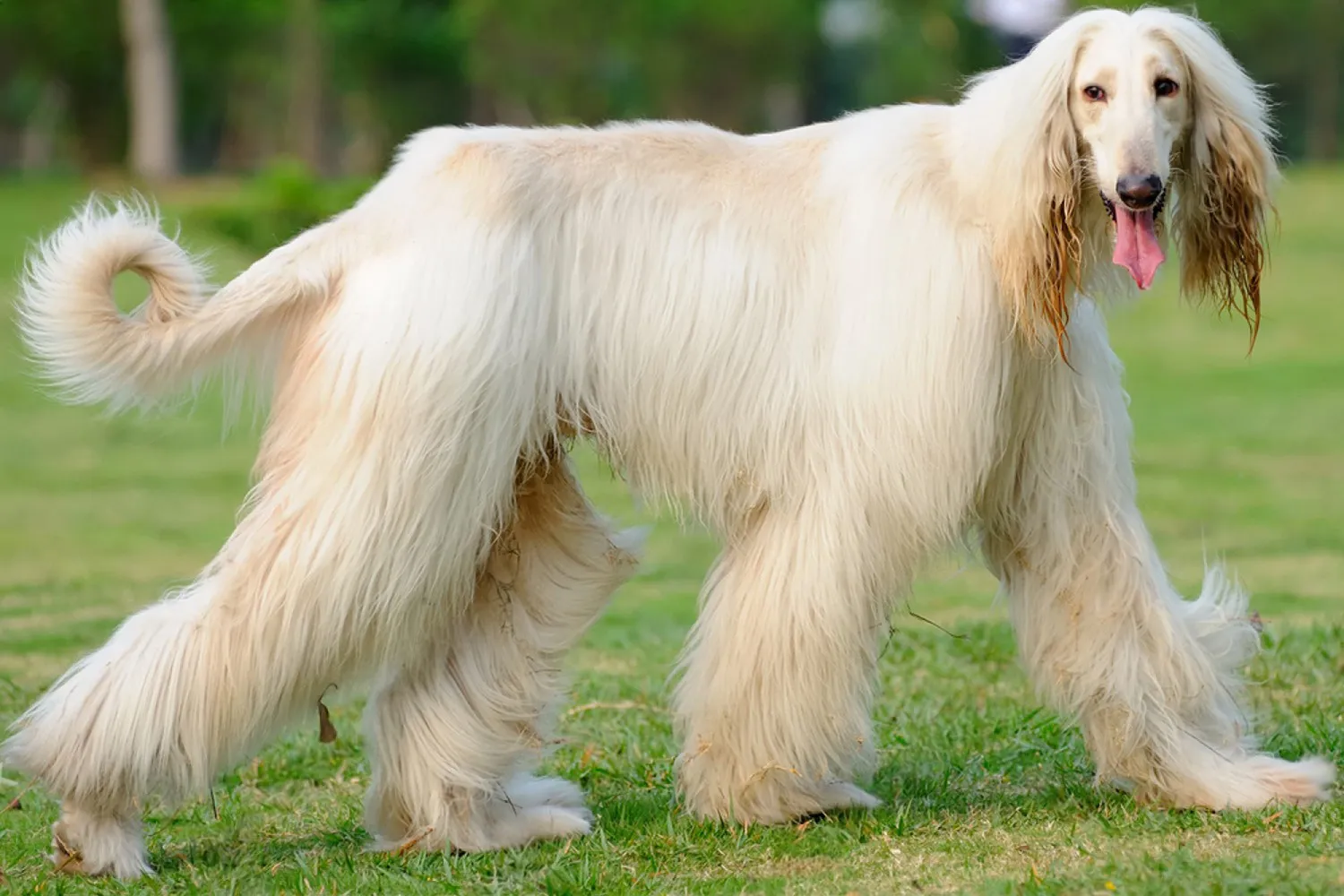
Do Afghan Hounds Have Common Health Issues?
Like many purebred dogs, Afghans can be predisposed to certain conditions, but that doesn’t mean your elegant hound is destined for a vet drama. A trustworthy breeder should be open about their dogs’ health histories and provide clearances showing the parents are free from common breed issues. Ask to see those documents eye clearances, thyroid checks, the whole bit and don’t be shy about questions. I keep a little folder (okay, it’s a messy drawer) with all my dogs’ records so I can track tests, vaccines, and anything the breeder or vet recommends.
Cancer is on the list of concerns for Afghans. Warning signs can include sores that don’t heal, bleeding from any bodily openings, difficulty breathing, or abnormal swelling around a sore. Early detection really matters. I do a quick nose to tail feel once a month while we’re lazing on the couch; it takes two minutes and gives me peace of mind. If something is off, your vet may recommend surgery, chemotherapy, or medication depending on the case. One of my older hounds once had a suspicious bump that turned out to be nothing scary but I was glad I didn’t “wait and see.”
Allergies pop up in this breed too, and they often look just like ours: eye and nasal discharge, sneezing, lethargy, and hair loss. The cause might be environmental or food related, so treatment can range from medication to adjusting the home environment to dietary changes. My friend’s Afghan stopped sneezing marathons after she added an air purifier and switched to a simple, limited ingredient diet. Little routines help wiping paws after walks, regular grooming to keep that silky coat clean, and washing bedding weekly.
Hypothyroidism is another condition to know. It’s a thyroid gland disorder and can show up as bacterial skin infections, lethargy, depression, and chronic ear infections. Your vet can confirm it with a blood test, and it’s typically managed with medication and diet changes. One of my dogs went from sluggish and mopey to bright eyed and playful after starting treatment. It was like someone flipped the “on” switch.
Then there are juvenile cataracts. The Canine Eye Registration Foundation (CERF) describes cataracts as complete or partial lens opacity, which can lead to vision impairment or even blindness. Some cataracts are mild and monitored; others are surgically removed. Keep an eye out for cloudiness or a youngster who suddenly hesitates in low light. A neighbor’s Afghan pup had cataract surgery and was back to stylish zoomies in no time, looking as regal as ever.
The big takeaway: being informed doesn’t mean being afraid. Choose a responsible breeder, set up routine vet visits (I love an annual baseline bloodwork and eye exam), and trust your gut if something seems off. Good nutrition, steady exercise, and gentle grooming go a long way too. With a bit of attention and care, your Afghan Hound can live a long, graceful, sofa stealing life by your side.
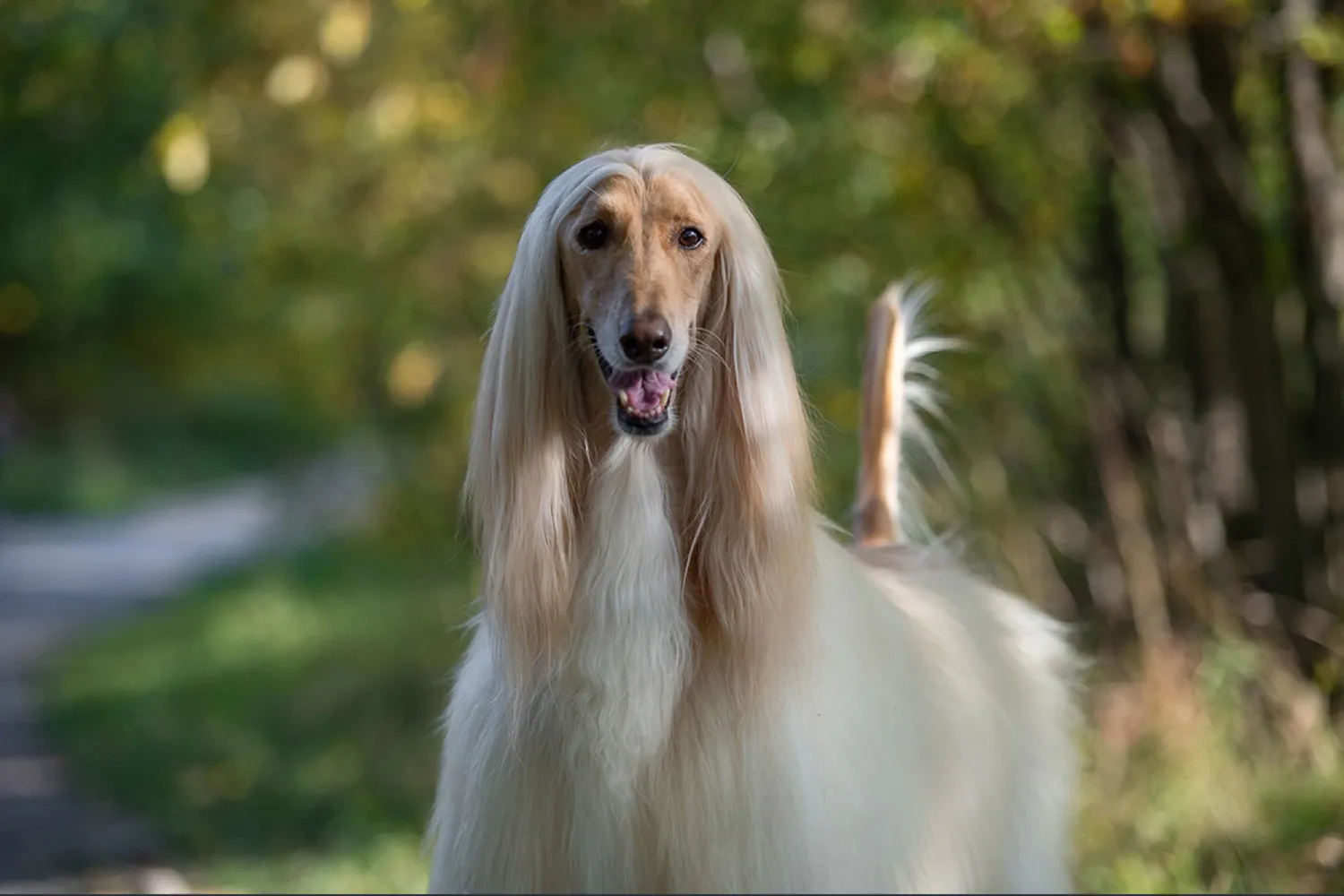
What Is the Lifespan of an Afghan Hound?
The Afghan Hound typically lives about 12-14 years, and with thoughtful care, it’s not unusual to see them happily trotting into their mid teens. A friend’s elegant Afghan, Laila, celebrated her 15th birthday with a slow hike and a very indulgent nap proof that a little consistency goes a long way. Keeping them lean, active, and mentally engaged makes a big difference. Afghans love a good sprint followed by a luxurious lounge, so I aim for brisk daily walks, a few safe off leash zooms in a fenced area, and “sniffari” routes that let their brains work as much as their legs.
Diet and routine matter, too. I’ve had the best luck with a high-quality, appropriately portioned diet and sticking to a schedule meals, exercise, and downtime. Grooming sessions double as wellness checks: you’ll spot any bumps, skin changes, or sore spots under that famous coat. Regular vet visits (yearly for adults, twice a year as they become seniors), dental care, and preventives keep surprises to a minimum. As they age, I swap long runs for shorter, softer walks, add puzzle toys and scent games, and make sure there’s a comfy bed away from drafts. Little adjustments like ramps for stairs and joint friendly supplements, if your vet approves, can help your Afghan stay spry and happy for as long as possible.
How Much Should an Afghan Hound Eat?
Afghan Hounds may look like runway models, but they still need a solid, nourishing diet to keep that elegance powered up. Aim for high-quality dog food with plenty of protein, and stick to two accurately measured meals a day for adults. I like to use a kitchen scale rather than a scoop once I started weighing meals, my Afghan’s waistline settled into a much healthier shape. Dry food works well as a base, and a spoon or two of wet food can make it more enticing and add a bit of moisture. Follow the feeding guidelines on your chosen brand, then adjust based on your dog’s activity level and body condition.
Because Afghans are deep chested, I’m extra mindful about bloat. Smaller, measured meals, a slow feeder bowl, and avoiding hard play for about an hour before and after eating are simple habits that help. Treats are fine, just keep them to about 10% of daily calories I learned the hard way that training treats add up fast with a food motivated sighthound.
Puppies, seniors, or dogs recovering from illness will have different needs. Afghan puppies typically do better with three to four smaller meals a day and a large breed puppy formula to support steady growth my friend’s pup got gangly until they switched, and it made a big difference. Seniors may need fewer calories but more joint friendly nutrients. Whenever you’re unsure, your vet is your best guide.
A couple of extras: transition to any new food gradually over a week to avoid tummy upsets, keep fresh water available at all times, and check your dog’s body condition monthly. You should be able to feel ribs with a light touch and see a defined waist if not, tweak the portions a bit and recheck in two weeks.
Afghan Hound FAQs
Are Afghan Hounds good for first time dog owners?
Afghan Hounds aren’t usually the best match for beginners. They’re independent thinkers with a proud, cat like streak, and that can make training feel like a negotiation rather than a lesson. I remember a friend’s Afghan in obedience class who’d look right at the trainer, sigh dramatically, and then stroll off as if to say, “I heard you. I’m choosing not to.” They’re also active dogs that need a good dose of exercise and mental stimulation; without it, boredom can turn into mischief fast. Experienced owners tend to do better because they know how to keep sessions short, fun, and positive, and they understand sighthound quirks like a strong prey drive and unreliable off leash recall. If your heart is set and you’re new to dogs, pair up with a sighthound savvy trainer, plan for plenty of enrichment, and commit to regular grooming those silky locks don’t brush themselves.
Can an Afghan Hound live in colder climates?
Absolutely. This breed was developed in the mountains of Afghanistan, and that luxurious coat is like a built in parka. Mine used to prance through fresh snow with the happiest “winter wiggle.” That said, cold weather still calls for care: check paws for ice and road salt, consider booties on frigid days, and dry the coat thoroughly after wet walks to avoid tangles. Heat is the bigger concern. In hot weather, keep outings to early mornings and evenings, offer constant fresh water, use fans or AC, and create shady rest spots. Cooling mats, kiddie pools, and light, breathable snoods can help too. Watch for signs of overheating excessive panting, drooling, bright red tongue, lethargy and move them to a cool area right away. I keep a damp cloth by the door in summer for a quick belly and paw cool down.
Are Afghan Hounds prone to separation anxiety?
Yes. Afghans bond deeply with their people, and long stretches alone can make them stressed or anxious. When I fostered an Afghan, he’d pace and whine if I so much as grabbed my keys. What helped was independence training: tiny, boring departures at first, a calm goodbye (no big emotional exits), and a special “you only get this when I leave” frozen lickable treat. A comfy safe space, white noise or a radio, and puzzle feeders can take the edge off. Some families find a midday dog walker or a reputable daycare keeps everyone sane. A dog camera is handy to monitor progress watching my foster settle after five minutes was a huge relief. Ideally, Afghans do best in homes where someone is around most of the day, or where their routine is consistent and comforting.
Disclaimer:
This article is for informational purposes only and doesn’t replace professional veterinary or training advice. Always consult a certified vet or dog trainer for guidance specific to your pup.
